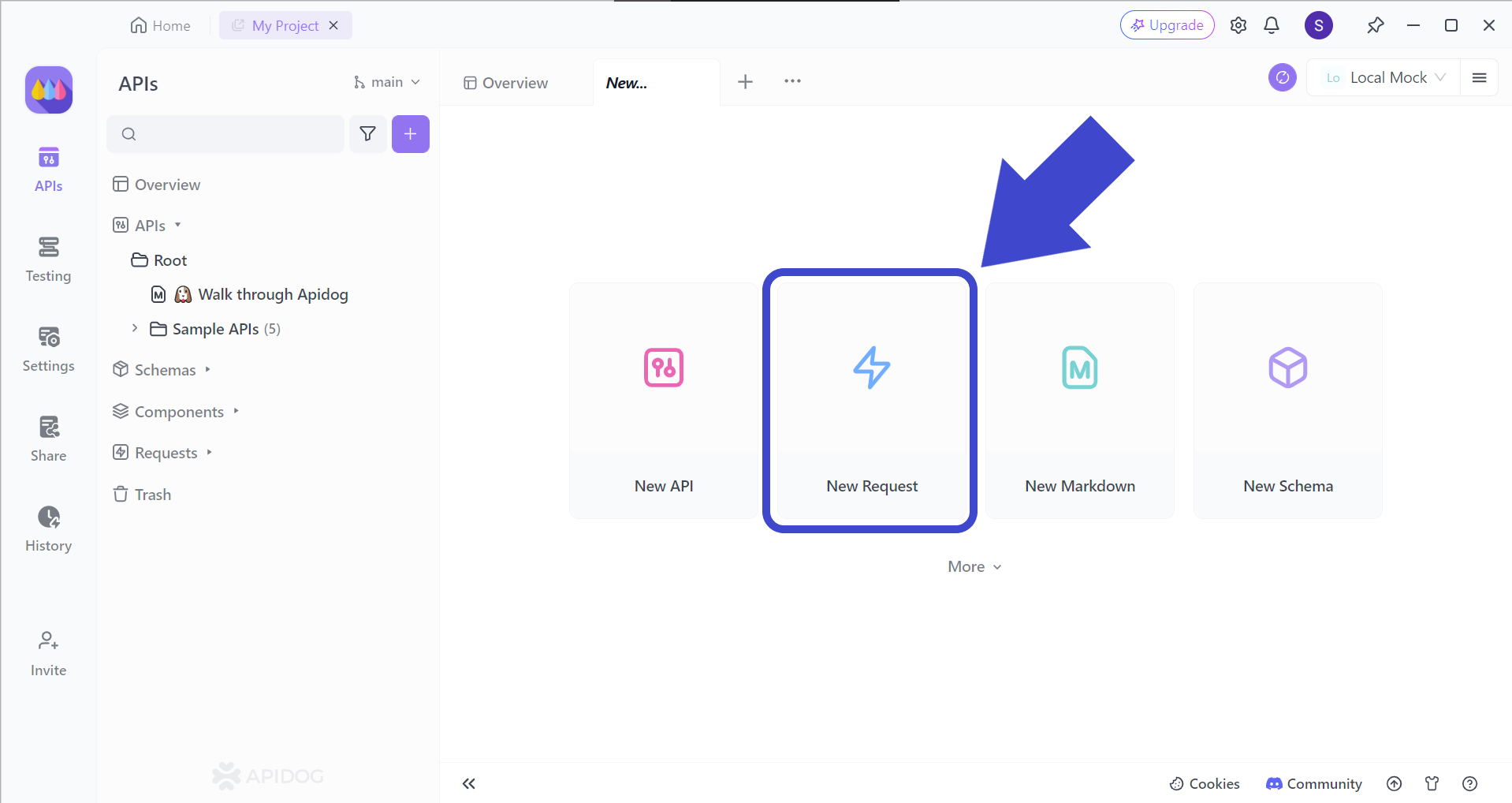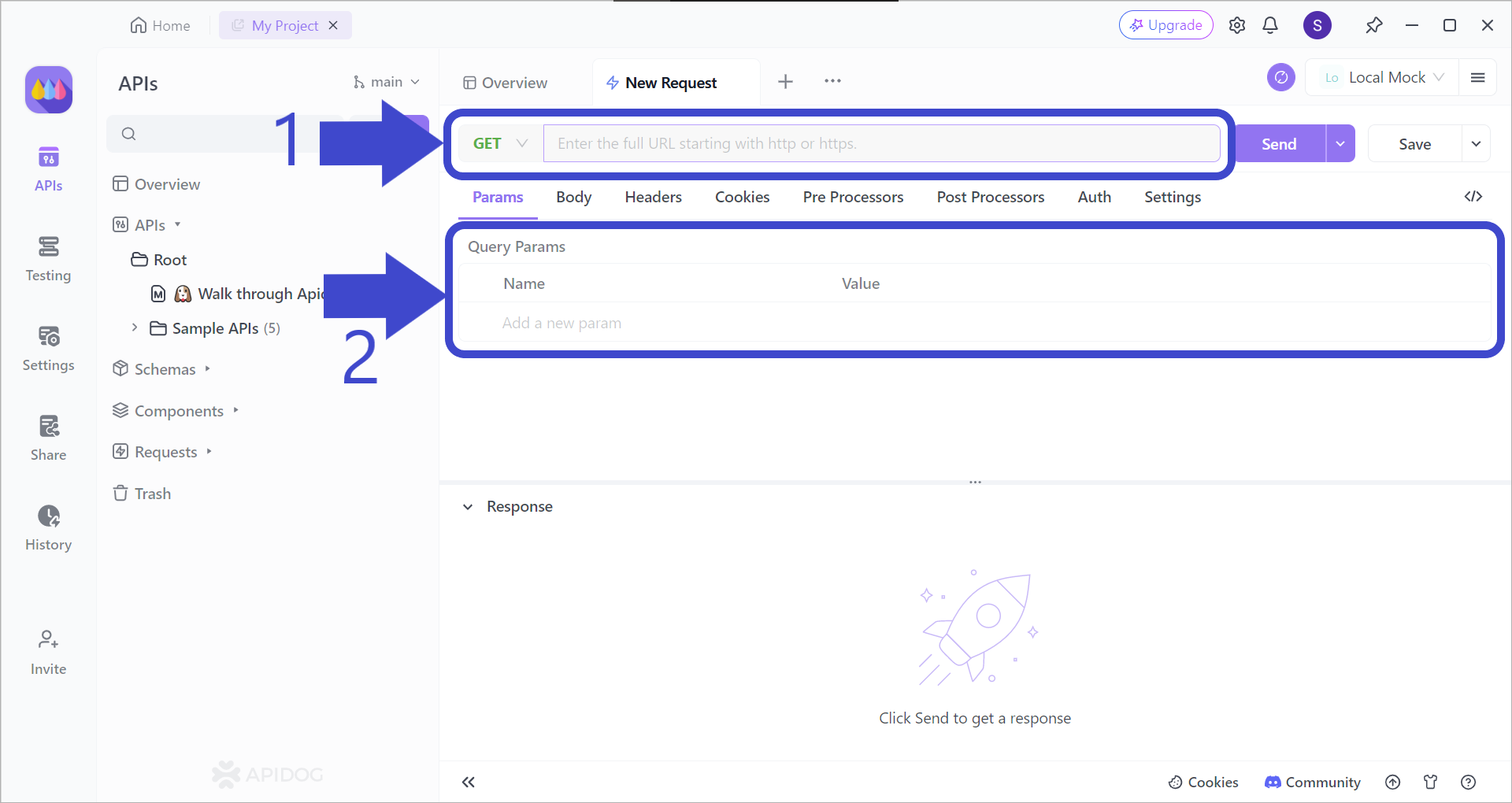Effective APIs rely on robust testing to ensure they function as intended. GET requests, forming the foundation of data retrieval within APIs, require specific test cases to guarantee they deliver accurate and secure responses. This article delves into the essential test cases for GET requests, equipping developers and testers with the tools to build dependable APIs.
To provide a simple yet intuitive platform to work with APIs, there is an API platform called Apidog that provides users with all the tools and functionalities required for the entire API lifecycle.
If you wish to learn about API GET requests, you can click the button below to start using Apidog today!

What are API GET Requests?
The formal definition of an API GET request would be:
An HTTP request method used to retrieve resources from a server over a network. GET requests are idempotent, meaning they can be sent multiple times without changing the state of the server.
API GET Requests Key Points
Function:
- Retrieving Specific Data: GET requests are designed to fetch specific data from an API. Imagine them as targeted searches in a library, where you know exactly what book or information you need.
- Read-Only Operations: They primarily perform read-only operations on the server's data. This means they can't be used to modify or create new data on the server.
Structure:
- URL-Based: Unlike some request methods that include data within the request itself, GET requests retrieve information based on the structure of the URL. They leverage parameters to specify the desired data.
Parameters:
- Key-Value Pairs: Parameters act as search filters within the URL. They are denoted by a question mark (?) followed by a series of key-value pairs separated by ampersands (&). For example,
/users?id=123retrieves data for user with ID 123. - Optional vs. Mandatory: APIs might have some mandatory parameters to identify the specific resource and optional ones to filter the retrieved data.
Additional Points:
- Stateless: GET requests are considered stateless, meaning each request is independent and doesn't rely on the state of previous requests.
- Caching: Since they retrieve data that might not change frequently, GET requests are often cached by browsers and servers to improve performance.
Benefits:
- Simplicity: GET requests are one of the simplest and most common API request methods, making them easy to understand and implement.
- Security: Their read-only nature makes them inherently more secure compared to requests that modify data on the server.
API Test Cases for Get Requests
1. Valid Requests:
Test Case 1: Retrieving a Single Resource:
Description: This test case verifies if a GET request with a valid ID retrieves the expected data for a single resource.
Pre-Condition: A resource with ID "123" exists in the system.
Steps:
- Send a GET request to "/users/123".
Expected Results:
- Response status code is 200 (OK).
- Response body contains user information with ID "123" and other relevant details.
Test Case 2: Filtering Data with Parameters:
Description: This test case checks if the API filters data based on provided parameters in the URL.
Pre-Condition: Multiple products exist in the system.
Steps:
- Send a GET request to "/products?category=electronics".
Expected Results:
- Response status code is 200 (OK).
- Response body contains only product information with the "electronics" category.
2. Error Handling:
Test Case 3: Non-existent Resource:
Description: This test case verifies the API's behavior when requesting a non-existent resource.
Steps:
- Send a GET request to "/users/999". (Assuming user 999 doesn't exist)
Expected Results:
- Response status code is 404 (Not Found).
- Response body contains an error message indicating the resource cannot be found.
Test Case 4: Invalid Parameters:
Description: This test case checks if the API handles invalid parameters gracefully.
Steps:
- Send a GET request to "/products?color=purple&size=invalid". (Assuming "invalid" size is not supported)
Expected Results:
- Response status code is 400 (Bad Request).
- Response body contains an error message explaining the invalid parameter.
3. Security:
Test Case 5: Authentication:
Description: This test case verifies if the API requires proper authentication for accessing specific resources.
- Steps:
- Send a GET request to a protected endpoint (e.g., "/admin/users") without authentication credentials.
Expected Results:
- Response status code is 401 (Unauthorized).
- Response body requires valid authentication for access.
Test Case 6: Authorization:
Description: This test case checks if the API restricts access based on user permissions.
Steps:
- Send a GET request to a resource a user is not authorized to access (e.g., "/users/123" for a user without admin privileges).
Expected Results:
- Response status code is 403 (Forbidden).
- Response body indicates insufficient permissions for accessing the resource.
Apidog - Test API GET Requests With Clarity
As GET requests are a vital component of nearly all APIs in existence, all developers must understand how to deploy them properly. If you are an API developer yourself, you may want to consider using Apidog, a comprehensive API development platform that provides developers with all the necessary tools for the entire API lifecycle.


Creating API GET Requests with Apidog

Begin by pressing the New Request button as pointed out by the arrow in the picture above.

To create an API GET request, make sure to select the POST method, and create a relevant URL. If you plan to pass multiple parameters into the POST request URL, make sure to include them in the section underneath.
Observing the Response Obtained from JavaScript HTTP GET Method Using Apidog
You can utilize Apidog's simple and intuitive user interface to analyze the response returned after the request has been sent.

Make the API GET request by pressing the Send button found in the right corner of the Apidog window. Then, you should be able to view the response on the bottom portion of the screen.
Conclusion
Mastering API test cases for GET requests is crucial for building dependable APIs. By implementing a comprehensive suite of test cases, you can guarantee your GET requests retrieve accurate and secure data. This not only ensures a smooth user experience but also safeguards your API against potential vulnerabilities.
Remember, thorough testing is an investment that pays off in the long run, fostering robust APIs that function as designed, so investing your time in learning a solid API tool like Apidog will never be the wrong choice. Learn more about Apidog through this link below, and get started for free!




